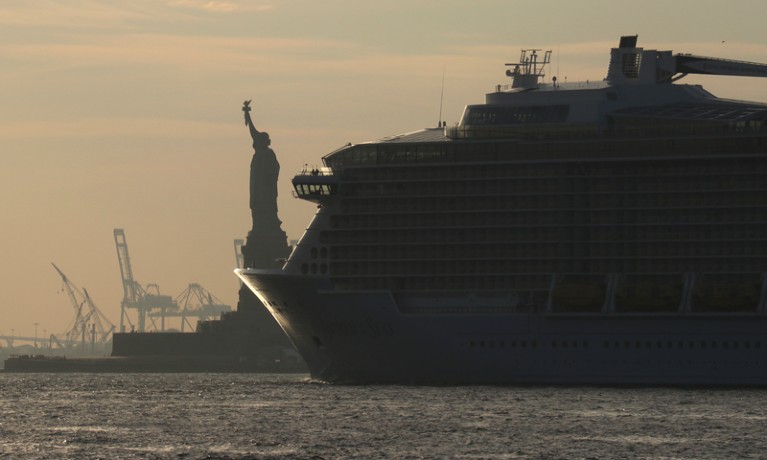
New York is among the cities battling to develop a sustainable future for its peopleCredit: Gary Hershorn/Getty
Cape Town has avoided its Day Zero, when it was due to run out of water, but has instead ended up with scenes reminiscent of the disaster film The Day after Tomorrow. Heavy winter rains in the South African city this week caused widespread flooding. Dry for so long, the city’s storm drains have been overwhelmed, and many roads have turned to rivers. Its citizens have been forced to shift from fears of a lack of water to dealing with the chaos caused by having too much.
In some ways, the experience of the city and its residents is a parable for our times, and an example of the kinds of problems faced by city officials the world over. How can we enable our urban centres to cope with extremes of weather, including those that global warming is expected to bring? And how can planning for worst-case scenarios be aligned with increasing awareness of the need to make our cities more sustainable?
That need is great. It’s well documented that humans are becoming an urban and not a rural species, and that trend is expected to continue. In 1950, less than one-third of the population lived in cities. More than 50% do so now, and by 2050 the figure is projected to be 70%. Every week, the urban population grows by around 1.5 million. By mid-century, as many people will be living in cities as occupy the entire planet today. About one-third of this new urban population growth will be in just three countries — Nigeria, China and India.
All of those billions of city-dwellers have entirely predictable demands: food, water, and subsequent waste disposal. Realistically, most world cities will struggle to become self-sufficient when it comes to dealing with those basic needs of their citizens. High-density housing and infrastructure don’t leave much space for fields and landfill. So the idea of a truly sustainable city is something of a misnomer. But to make cities more sustainable than they are now is a noble goal, and one included in the United Nations’ Sustainable Development Goals (SDGs) agreed in 2015.
Specifically, SDG 11 pledges to “make cities and human settlements inclusive, safe, resilient and sustainable”. Progress towards that goal will be discussed at a meeting — the High-Level Political Forum on Sustainable Development — at UN headquarters in New York City later this month. Experts in the field will also meet in Singapore next week for a one-day Springer Nature event on Science and the Sustainable City.
Advance the ecosystem approach in cities
In a World View article this week, one of the conference speakers makes the case for city leaders to take an ‘ecosystem’ approach to urban environmental management. Most cities have exploited the surrounding ecosystems to support their needs, but efforts to make this relationship less damaging — and so more sustainable — are crucial. Cities are ecosystems, too, of course, and the explosion of urban science to model and understand these systems — another topic to be discussed at the Singapore meeting — demonstrates one important way in which research can contribute.
It’s clear that approaches, including research, must be tailored to the individual needs of cities and the regions around them, wherever they are. But, in every case, rampant urbanization demands integrated and multidisciplinary thinking.
Delegates to the New York meeting need only look around them to see one emerging problem with SDG 11 that demonstrates the point. Experts are questioning whether “resilient” and “sustainable” are as complementary as they at first seem, or whether they might instead conflict. To help make the Big Apple more resilient to rising sea levels, plans for a massive, retractable storm-surge barrier across New York Harbor were floated after the devastation caused by Hurricane Sandy in 2012. But others have pointed out that a US$20-billion project that could damage ecosystems, and that would almost never be used, can hardly be classed as sustainable. The same debate is unfolding in Cape Town. Although many blame climate change for the drought there, experts argue that the root cause of the problem is more straightforward: reluctance among policymakers to invest in a new reservoir system. In part, this failure to make the city more resilient was caused by concerns that the dams required were not a sustainable way to do it.
Such decisions and choices are difficult because they require weighing up often conflicting demands and priorities. Science can help by gathering and analysing data to define risks and benefits. Researchers can thus help to tackle these thorny problems, and to ensure that cities continue to offer a home to people — and to much of science itself.

 Advance the ecosystem approach in cities
Advance the ecosystem approach in cities
 Sowing the city
Sowing the city
 Nature special: The circular economy
Nature special: The circular economy
 Curbing urban greed
Curbing urban greed



